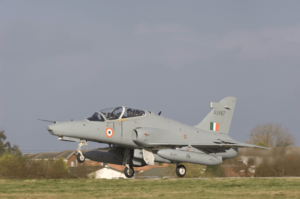Piston Engine – Ever wondered looking at a car, motorbike, or even at an aircraft, how they get power to move? Let’s study one of the major components of all vehicles i.e. Engine together!
What is an engine?
A major component of every vehicle transforms one form of energy into another form. Most of the engines convert the chemical energy into mechanical work and these types of engines are known as heat engines.
Classification of heat engines are shown below:

Engines are of two types Internal Combustion Engine(ICE) and External Combustion Engine. Our focus will be on reciprocating engines also known as Piston engines that fall under the category of Internal combustion engines. A piston engine uses one or more pistons to convert the chemical energy into work. They are further divided into spark ignition and compression ignition engines.
The basic components of the Piston engine are: -
- Cylinder Block- It is the main supporting structure for various components. The cylinder head is mounted on the cylinder block and both are provided with the water jackets and cooling fins in the case of water and air cooling respectively.
- Cylinder- The cylinder is the type of vessel in which the piston makes a reciprocating motion.
- Piston- It is the major component of the piston engine fitted inside the cylinder forming the boundary of the engine.
- Combustion Chamber- The region enclosed in the upper part of the cylinder, where the pressure from the combustion of fuel and release of thermal energy is formed in this part of the cylinder.

- Inlet and Exhaust manifold- The pipe through which air or air-fuel mixture is drawn into the cylinder is known as the inlet manifold and it connects the intake system to the inlet valve. The exhaust manifold connects the exhaust system to the exhaust valve through which products of combustion escape into the atmosphere.
- Inlet and Exhaust valves- These are provided on the cylinder head for regulating the charge coming into the cylinder and discharging the combustion products from the cylinder.
- Connecting rod- It connects the piston to the crankshaft.
- Crankshaft- It converts the reciprocating motion of the piston into useful rotary motion of the output shaft.
- Camshaft- Camshaft and its associated parts i.e. cams control the opening and closing of valves.
- Flywheel- To achieve a uniform torque, an inertia mass in the form of a wheel is attached to the shaft and it is known as the flywheel.
- Spark plug- It is a component to initiate the combustion process and it is present on the cylinder head of the SI engine.
Working principle of Piston engines
The engine has to follow a cycle of operations in a particular sequence for its proper functioning. Engines are also classified based on cycle operation i.e. Four-stroke and two-stroke engines. In a four-stroke engine, the cycle is completed in four strokes of the piston or two revolutions of crankshaft whereas, in a two-stroke engine, the cycle is completed in one revolution and two strokes, suction and exhaust. They only differ in the way of filling the fresh charge and removing burnt gases from the cylinder.
Working of both SI and CI engines are same, it only differs in certain parameters-
- The compression ratio of the SI engine is between 6 to 10 whereas, for CI, it is from 16 to 20.
- In CI engine only air is inserted during a suction stroke but in a SI engine, the air-fuel mixture is inducted.
- Both the carburetor and ignition system is required in a SI engine, whereas, in CI engine self-ignition takes place.

The ideal sequence of four-stroke engine operation is:
- Suction or Intake- The charge consisting of air or air-fuel mixture is drawn into the cylinder.
- Compression Stroke- The charge taken is now compressed by the return stroke of the piston.
- Expansion or Power Stroke-The power is produced during this stroke. Both temperature and pressure decrease.
- Exhaust Stroke- In this stroke, the pressure falls to atmospheric level and burnt gases escape from the exhaust valve.
The working principle of the two-stroke engine is:
- Suction-During this stroke, air or air-fuel mixture enters the cylinder when the piston moves from the top dead center (TDC) to the bottom dead center (BDC).
- Exhaust- The air-fuel mixture gets compressed by the piston when moving from BDC to TDC and the spark plug ignites the mixture. The high pressure is exerted on the piston by the heated gas and exhaust gases expelled out from the engine.

Both of these processes occur simultaneously, the waste gases expelled out from one side whereas the fresh mixture enters into the cylinder from another side.
Piston aircraft fly at an altitude below 15000 feet (4.57 km) and have one or more piston engines connected to propellers, which provide thrust to move the airplane on the ground and in the air. Manufacturers of piston-engine airplanes are Cessna, cirrus, diamond, etc.
* The information provided herein is, to the best of our knowledge and is only for informative purpose. If you have a news update or correction, let us know at -info@garudauniverse.com





It agree, it is a remarkable piece